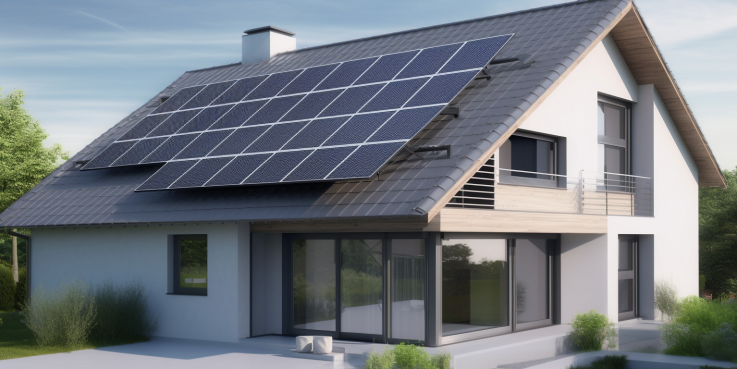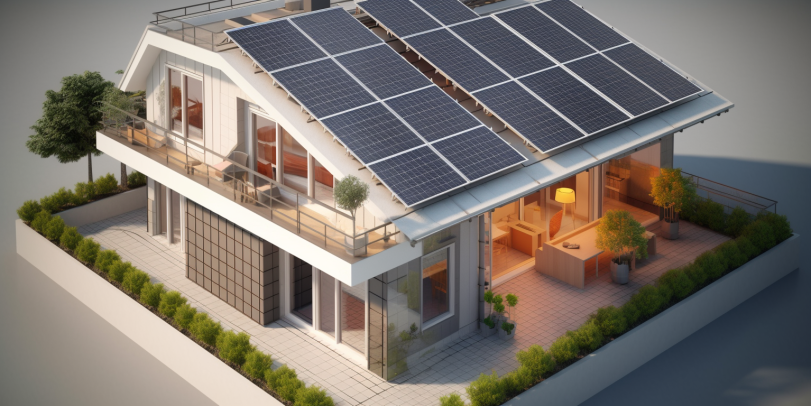
Solar power has emerged as a promising alternative to traditional electricity sources, offering numerous benefits such as reduced environmental impact and potential cost savings. The increasing popularity of solar panels has sparked interest in understanding the factors that influence their installation requirements for a 2,000 sq ft home.
This article explores the key considerations that affect the number of solar panels needed for such a residence. Climate and sun exposure, house characteristics, and energy usage and consumption are among the primary factors that determine the optimal number of panels.
By analyzing these factors, homeowners can make informed decisions to ensure efficient and effective solar power generation. Understanding the impact of environmental conditions, building characteristics, and energy consumption patterns is essential in maximizing the benefits of solar energy and achieving sustainable living.
This article aims to provide valuable insights into the factors affecting solar panel needs for a 2,000 sq ft home, enabling homeowners to make informed choices regarding their solar power systems.
Key Takeaways
- Climate and sun exposure greatly affect solar panel efficiency.
- House characteristics, such as age, building materials, appliances, and occupants, impact solar panel requirements.
- Energy-efficient appliances and building materials can reduce the number of panels needed.
- Assessing energy usage, consumption patterns, and panel efficiency is crucial for accurate estimation of the required number of panels.
Climate and Sun Exposure
Climate and sun exposure are important factors to consider when determining the solar panel needs for a 2,000 sq ft home.
The efficiency of solar panels is greatly influenced by the climate in which they are installed. Areas with more sunlight will generally have higher solar panel efficiency ratings.
Additionally, the impact of shading should be taken into account when considering the number of solar panels needed. Shading from trees, buildings, or other obstructions can significantly reduce the amount of sunlight that reaches the panels, thus reducing their overall efficiency.
It is important to carefully assess the climate and sun exposure of a particular location to ensure that the solar panel system will be able to generate enough electricity to meet the needs of the 2,000 sq ft home.

House Characteristics
House characteristics such as age, building materials, appliances, and occupants play a role in determining the solar panel requirements for a 2,000 sq ft home.
House Age:
- Older homes may have less energy-efficient features, resulting in higher energy consumption.
- Newer homes are often built with better insulation and energy-saving technologies, reducing overall power needs.
Building Materials:
- The type of materials used in construction can impact the heating and cooling requirements of the home.
- Homes with good insulation and energy-efficient windows can reduce energy usage, making them more suitable for smaller solar panel systems.
Appliances:
- The number and efficiency of appliances used in the home can significantly affect energy consumption.
- Energy-efficient appliances can help reduce power needs and, in turn, the number of solar panels required.
Considering these factors alongside climate and sun exposure helps determine the optimal number of solar panels needed for a 2,000 sq ft home.
Energy Usage and Consumption
To accurately estimate the required number of solar panels for a 2,000 sq ft home, it is essential to analyze and evaluate the energy usage and consumption patterns within the household.
One crucial factor to consider is the solar panel efficiency, which refers to the ability of the panels to convert sunlight into electricity. Higher efficiency panels can generate more power with the same amount of sunlight.
Additionally, the choice between a grid-tied or off-grid system impacts solar panel needs. Grid-tied systems allow homeowners to sell excess power back to the grid through net metering, while off-grid systems require the storage of excess energy for later use.
By assessing energy usage and considering the efficiency of solar panels and the desired system type, a more accurate estimation of the required number of solar panels can be determined.

